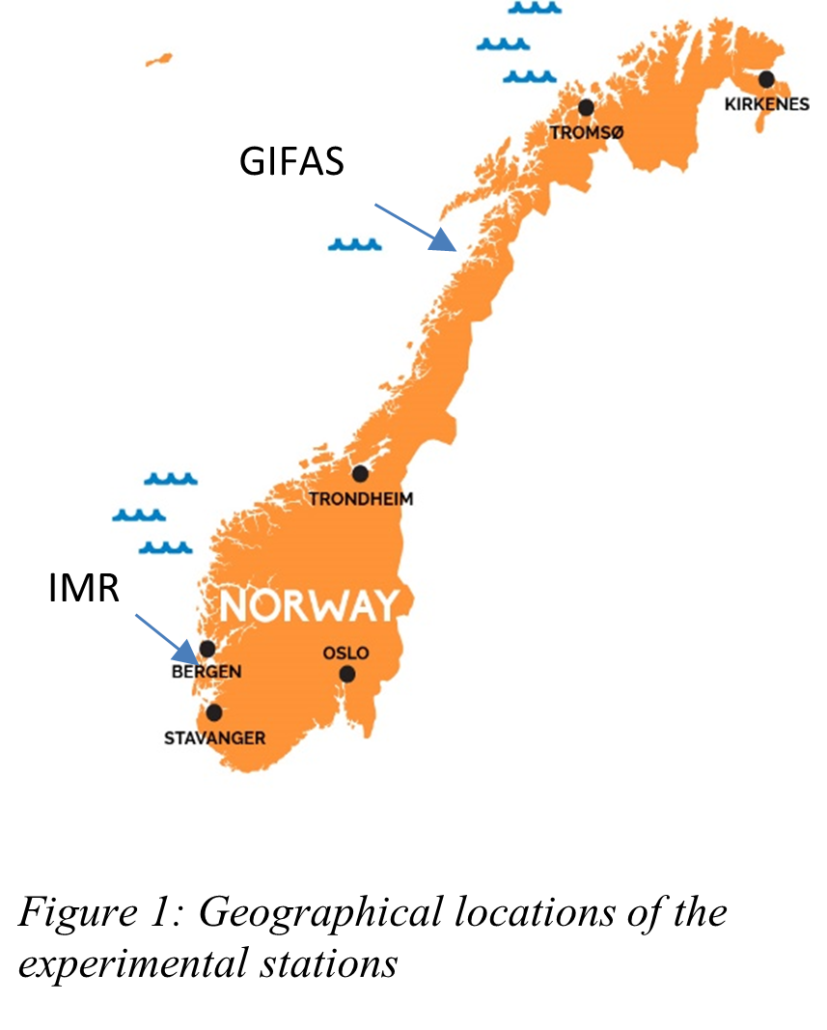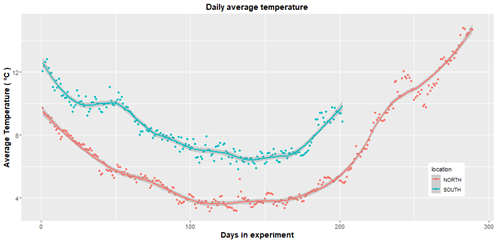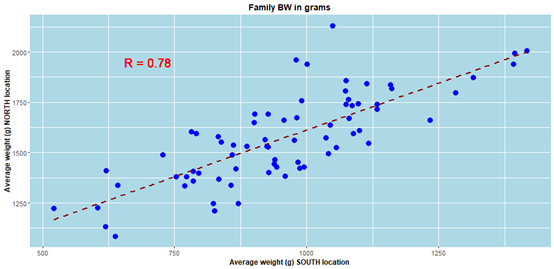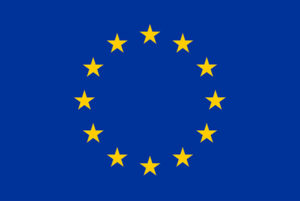Breeding for climate resilience: FutureEUAqua carried out semi-commercial scale climate trials to study the impact of climate change in salmon breeding
Climate change is one of the major global concerns with no exception to aquaculture. Research conclusively shows that climate change results in a rise in sea-water temperature, shifts in salinity and acidification of the oceans – factors that will affect marine aquaculture production. Deviations from the current production environments of many aquaculture species may lead to sub-optimality of the current genetic material under future environment in the face of climate change. However, some fish/genotypes are more sensitive to change in an environment than others (Lynch and Walsh 1998), a phenomenon referred to as genotype-by-environment interaction (GxE). Measure of GxE for a population serves as indicator how aquaculture breeding can prepare for the future challenges up front.
Existence of such interactions may hinder the optimal realization of genetic gain and reduces the competitiveness of the aquaculture industry. Hence, one of the major goals of aquaculture industry is to produce robust fish that could thrive under various environmental stressors due to climate change.
Studies based on controlled temperature trials, where full-sibling salmon families were raised at different temperatures regimes, have demonstrated that there is a presence of GxE in terms of growth parameters (Khaw et al., 2019). For commercial breeding programmes it is essential to know and document whether and in what extent the current commercial fish strains can maintain their production capacity in changing climate.
 FutureEUAqua carried out semi-commercial scale climate trials to study the impact of climate change in salmon breeding. Parallel experiments were conducted in two selected geographical locations (South and North) in Norway to mimic two divergent climatic production environments. The South location was at Institute of Marine Research (IMR) research station located at Austevoll, Western Norway, and the North location was at Gildeskål Research station (GIFAS) located in Inndyr, Northern Norway. A total of ~ 4,000 tagged fish from 75 families from Benchmark Genetics Norway population year-class 2019 were transported to the experimental stations at the end of October 2019 and transferred to sea cages. The fish were fed with a conventional marine based diet.
FutureEUAqua carried out semi-commercial scale climate trials to study the impact of climate change in salmon breeding. Parallel experiments were conducted in two selected geographical locations (South and North) in Norway to mimic two divergent climatic production environments. The South location was at Institute of Marine Research (IMR) research station located at Austevoll, Western Norway, and the North location was at Gildeskål Research station (GIFAS) located in Inndyr, Northern Norway. A total of ~ 4,000 tagged fish from 75 families from Benchmark Genetics Norway population year-class 2019 were transported to the experimental stations at the end of October 2019 and transferred to sea cages. The fish were fed with a conventional marine based diet.
The daily water temperature was measured at different depth of the sea cages. The daily average temperature variations at each experimental station during the experiment are shown in Figure 2.
Figure 2: Average daily temperature measurements in oC at the experimental locations. GIFAS is the NORTH location and IMR is the SOUTH location.
The experiments were terminated (completed) in May 2020 and August 2020 at the South and North experimental locations, respectively. At the end of the climate trails, the average mortality rate and body weight at termination were 18.6% and 965g at the South station, and 19.4% and 1580g for the North station, respectively. The correlation of the average body weight of the full-sib family in the two locations was 0.78 (Figure 3).
Figure 3: Average body weight (in grams) over two cages of the full-sib families in the two experimental locations. R is the Pearson’s correlation of the two measurements
Genetic correlation is used as a measure of the extent of GxE, assuming the growth parameters recorded at the two geographical locations as different traits. Results showed that there is limited re-ranking of families in terms of growth parameters (with genetic correlation > 0.9) for these two geographical locations indicating that no significant GxE is detected for growth. These results indicate that the fish material from the commercial breeding programmes, selected for their current breeding goals, will perform well across these production environments, and expected to perform well in the future changing climate.
Our conclusions, however, applied only to this given set of localities as the environmental conditions of these locations might have been within the optimal range of farming salmon to be able to detect GxE. Furthermore, the implication of the results is limited and applied only to the growth period studied.
References
Lynch M, Walsh, B: Genetics and Analysis of Quantitative Traits. Sunderland, MA: Sinauer; 1998.
Khaw, H. L., S. A. Boison, L. Johansen, M. W. Breiland, P. Sae-Lim. (2019). Genetic variation for thermal sensitivity in growth and lice tolerance of Atlantic salmon. Annual EAAP2019




